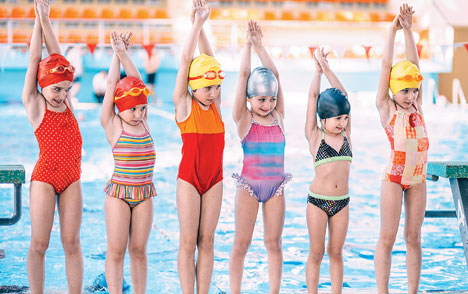
Kids, particularly under the age of 14, should be encouraged to participate in multiple sports. Apart from the psychological and physiological benefits of participating in different sports, kids also tend to learn different movements and social skills due to the rules, environment and demands associated with each sport.
The only alternative for learning different movement skills is to be involved in a formalised physical training programme. That, however, may not have a strong impact in the early stages due to lack of intrinsic motivation. Basically, kids will not enjoy doing X number of reps or Y number of sets and being instructed to move in a certain way. In fact, excessive relying on external feedback in the early stages may at times be detrimental to the long-term learning process.

It may be better for the kids to explore — task and environment — to find a solution on their own with some guidance from coaches whenever appropriate. Here are a few examples of various categories of sports, all of which can help kids explore different movement variables and, as a result, may allow kids to have better movement awareness and help them in their sport of choice.

Kids do not have to learn all the combinations; rather, they should complement their existing sport with a skill and/or movement strategy that is different from the ones they are used to.
1 Individual (like squash) and team (like football): An individual sport can teach position awareness and decision-making ability with less variability, while a team sport can add complexity in decision-making and also help kids look beyond individual constraints.

2 Small surface area (like volleyball) and large surface area (like rugby): A small surface area will demand smaller movements whereas a large surface area will demand longer movements that will have different physiological and biomechanical demands on the body.
.jpg)
3 High-reactive (like badminton) and low-reactive (like golf): A high-reactive sport will teach decision-making skills in less time, while a low-reactive sport will allow individuals to focus on refining skills with more time. It will also have different implications on movement strategy due to time constraint.
4 Contact (like rugby) and non-contact (like cricket or tennis): Contact sports will teach force absorption and production skills with strong emphasis on overall physical preparation, whereas non-contact sports will help in physical preparation relevant to performing the required skill.
5 Land-based (like hockey) and water-based (like swimming): Body position in land-based sports is different from most water-based sports, and being comfortable in different body positions could help in long-term movement education. Land-based sports can also be more demanding on the joints due to gravity compared to water-based sports.
6 Stationary starts (like track events) and build-up (like football or hockey): The ability to take off from a standing start can be different compared to taking off from a stride or a jog.
7 Linear (like track events) and rotational (like field and court sports): Sports or events that are linear in nature can be a great introduction to movement skills. However, rotational sports can complement them with movement occurring in different planes of motion.

8 Cyclic (like rowing) and acyclic (like field and court sports): Cyclic sports and events can be useful in practising a skill repeatedly with less complexity, whereas acyclic sports will allow kids to be more adaptive to external stimuli.

9 Invasion (like basketball) and non-invasion (like volleyball): Invasion sports will help to understand different tactics as compared to non-invasion sports. The ability to get to the right place at the right time will be different in these two categories.
Physical preparation coaches can learn a lot by watching kids play different sports. Participation in different movement skills through sport, dance and formalised physical training may be useful in avoiding movement-based impairments in the long term.
Parents should also avoid pushing their children to play just one sport throughout the year. Children tend to get both psychologically and physically exhausted competing in one sport. Therefore, let them enjoy their sports, make friends, and learn different movement strategies before you think of making them ace athletes.











